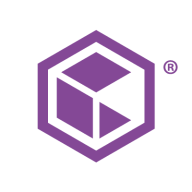

Commvault Cloud and IBM Disaster Recovery Services are competing products in the data protection and recovery space. Commvault Cloud offers better pricing and support, while IBM Disaster Recovery Services is noted for superior features, indicating value for its cost.
Features: Commvault Cloud provides an extensive range of capabilities, including integrated data protection, backup, and disaster recovery. IBM Disaster Recovery Services is distinguished by its robust automated recovery processes and comprehensive recovery solutions.
Ease of Deployment and Customer Service: Commvault Cloud's deployment model is praised for its straightforward setup, complemented by strong customer support. IBM Disaster Recovery Services offers efficient deployment and excellent customer service with a broad range of recovery options.
Pricing and ROI: Commvault Cloud is recognized for a more attractive setup cost and quicker return on investment. IBM Disaster Recovery Services, though requiring a higher initial investment, offers significant ROI through its comprehensive feature set.


Commvault Cloud is the ultimate cyber resilience platform built to meet the demands of the hybrid
enterprise. Beyond its core functionality of data backup and recovery across diverse workloads, including applications, databases, virtual machines, and files, Commvault Cloud stands out as a robust defense against ransomware. Going beyond backup, the platform integrates advanced data security features such as encryption, access control, and threat detection, safeguarding against unauthorized access and cyber threats.
With tools for data management, classification, and migration, businesses can optimize storage costs, enhance accessibility, and comply with regulations seamlessly. Boasting cloud integration with major providers like AWS, Azure, and Google Cloud, Commvault Cloud leverages the scalability and flexibility of the cloud for comprehensive data protection and management. The platform's automation capabilities streamline tasks, and its reporting and analytics features provide valuable insights into data usage, potential risks, and optimization strategies. Commvault Cloud is not just a security tool; it is a key component of cyber resilience, enabling organizations to not only protect against cyberattacks but also recover swiftly and minimize the impact of incidents. Elevate your cyber resilience strategy with Commvault Cloud.
We monitor all Disaster Recovery as a Service reviews to prevent fraudulent reviews and keep review quality high. We do not post reviews by company employees or direct competitors. We validate each review for authenticity via cross-reference with LinkedIn, and personal follow-up with the reviewer when necessary.